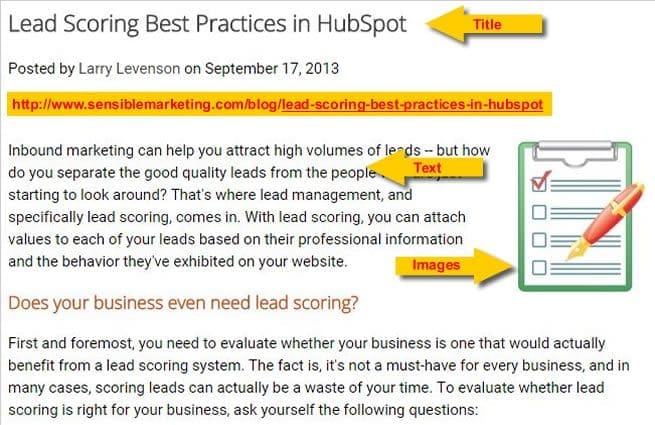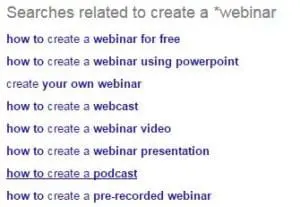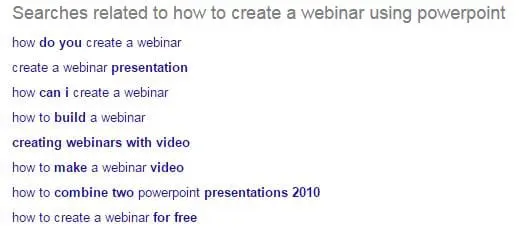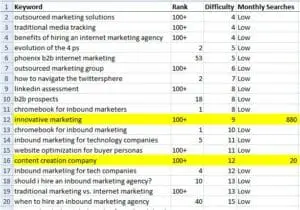 One of the most common questions we get asked by our prospective clients is, “How can I create a solid SEO keyword strategy?” I answer that question in full in this article.
One of the most common questions we get asked by our prospective clients is, “How can I create a solid SEO keyword strategy?” I answer that question in full in this article.
Certainly by June of 2015, every marketer is aware that line search has changed dramatically. In the past year alone, Google has confounded us with Page Payout, Payday Loan, Authorship, Pigeon, HTTPS, Panda, Penguin or Pirate (and these were just the major Google algorith updates of 2014). After the Mobilegeddon algorithm change in April of this year, search will never be the same. Compounding the issue, Google no longer shares information about what keywords brought users to your site.
However, all is not lost! It is easier than ever for mere mortals to create content that gets ranked well in Google and drives visitors to our websites.
Why is SEO important in 2015?
Three statistics will sum up the importance of SEO in 2015:
- One-third of all organic search clicks on Google are on the first result. (Steamfeed)
- Each day, 20% of the terms typed into Google have never been searched before. (#Socialnomics 2014)
- 92% of online users turn to search engines first when looking for products and services. (HubSpot)
SEO is more important than ever now, and luckily, it’s actually gotten much easier. Let me show you how to make sure your content gets found on the search engines.
4 key elements that impact search results
There are 4 elements that impact search results that you need to understand before doing any keyword research.
- Fresh content. Search engines want to see that your site has new and relevant content created on a regular and ongoing basis. For most companies the easiest way to do this is with a blog; however new web pages, white papers, case studies, news releases, videos, and podcasts also count as near search engine content.HOT TIP: Turn a few blog posts into an ebook or white paper, or create and share a slide presentation based on a blog. Repurposing your content is an easy way to publish more, based on one or a few original posts.
- Keywords used in the page, URL, and metatags. Your content is greatly affected by how you use your keywords in these areas.Here’s an example of a post I wrote two years ago that is now ranked #10 on Google results, right after all the HubSpot.com articles about the same topic.
 In this post, we strategically used the keyword “lead scoring best practices” in the URL, the post title, the text and in images (both as the image name and the alt text). The result of using this keyword in all those places is that two years later, it’s still on page one of Google without any further effort! We usually only optimize for 1-2 keywords per page.
In this post, we strategically used the keyword “lead scoring best practices” in the URL, the post title, the text and in images (both as the image name and the alt text). The result of using this keyword in all those places is that two years later, it’s still on page one of Google without any further effort! We usually only optimize for 1-2 keywords per page.
HOT TIP: Use HubSpot’s SEO View after you’ve written your blog post to make sure you have all your SEO bases covered.
- Site architecture. Make sure your most important keywords are supported on your home page and top-level pages of your website, like the product and services pages, industries, and about us. This helps inform the search engines what your site is about.
- Links. Links are one of the most important ways that search engines judge website and page authority. Both the quantity and quality of the links are evaluated in search engine algorithms, so having a diversity of them from industry sites to client/partner sites, internal links to/from other content on your site, and external links to other resources, will all be figured into your search results positioning.
All of these 4 elements must be present to increase your organic search ranking. But the foundational piece of building your keyword strategy is choosing the right keywords.
Choosing the right keywords
To build an SEO keyword strategy, start by thinking about what a user is going to type to find products or services like yours.There are six ways that people might search for your products or services:
- What is it? (Try to differentiate your product or service)
- What does it do? (Features)
- What is it for? (What problem does it solve?)
- Who it’s for (Does it fit for my industry?)
- Specific feature or capabilities
- Buying intent (eg.searching for price)
Once you have some of these basic questions answered, and have some ideas of how people will search for your website, open a new browser tab and start doing some Google searches for the terms you’ve identified.
Use Google to find the keywords that people are actually using
Google provides two ways to see the keywords that people are actually searching for. And both ways are completely free and easy to use.
Method 1: Google’s Keyword Suggest tool
Google Keyword Suggest is a great research tool for marketers. . . and you’re probably already using it! Let’s say you’re looking for information on how to create a webinar. You could search for “webinar”, but you’re really looking for some solid “how-to” information; so you enter “create a webinar” (without quotes) in the search bar and a dropdown of related suggestions shows up.
 For the savvy marketer, this list contains some of the keywords that people are searching for in enough volume to make Google think you might be looking for these things, too. These are long tail keywords that Google is suggesting you use.
For the savvy marketer, this list contains some of the keywords that people are searching for in enough volume to make Google think you might be looking for these things, too. These are long tail keywords that Google is suggesting you use.
You can read more about using Google’s Keyword Suggest Tool here.
Method 2: The bottom of the search results page
This is my favorite method for keyword search, and it’s mostly ignored. I think it’s a great example of “hiding in plain sight.”
 Let’s use that last search above “create a webinar” and click the search button. Now scroll all the way to the bottom of the page, and Google gives you 8 more long tail keywords to consider:
Let’s use that last search above “create a webinar” and click the search button. Now scroll all the way to the bottom of the page, and Google gives you 8 more long tail keywords to consider:
This bottom-of-the-page listing is an excellent source of long-tail keywords. Pick one that is close to your blog topic, like “how to create a webinar using powerpoint”, scroll to the very bottom of the search results, and you’ll see:

This method delivers a virtual treasure trove of related long tail keywords! Now we can take that long list of keywords and see which of them will be easier to rank for.
Identify easy-to-rank keywords with HubSpot’s keywords tool
Head on over to the HubSpot Keywords tool, under the Reports tab. Click on the Add Keywords button, and add your entire list of keywords into the big text box. Click the small Add Keywords button. . . and go have a cup of coffee. When you come back, you’ll see the monthly searches, rank, and difficulty for each keyword.
- Monthly Searches: An estimate of the total monthly searches for this exact keyword based on a sample of searches.
- Rank: Your site’s approximate ranking in the search engine results. Be aware that this is an approximation and may differ from what you see based on your location and personalization settings.
- Difficulty: 0 – 100 score estimating the difficulty you will face getting into the front page of results for this reword.
- A score of 50 or less means that you can do this fairly easily.
- 51-70 can be done with some effort and time.
- Those listed at over 70 in difficulty should not be used as there is too much competition for those terms and it is unlikely that you will ever rank for them.
How to put your entire keyword list under a microscope
To get a really helpful view of all your keywords in HubSpot, export your keywords and open the file in Excel or Google Sheets or your favorite spreadsheet tool.
- To keep things simple, remove columns B, D, F, H, I, and J.
- Freeze the top row. And I like to make the top row bold.
- Do a Custom Sort by Difficulty and then by Monthly Searches.
- This should give you a list of keywords by difficulty, from low to high. Now scroll down to difficulty of 50, and put a underline after these keywords. The keywords above this line are easy to rank for. Also add a line after the Difficulty=70 keywords.
 Now find your yellow electronic highlighter, and highlight all keywords, 50 or under, that have a number for Monthly Searches. Do NOT highlight any marked “Low”.
Now find your yellow electronic highlighter, and highlight all keywords, 50 or under, that have a number for Monthly Searches. Do NOT highlight any marked “Low”.
This highlighted list is your low hanging fruit in the SEO area and should be the keywords you go after in your next campaigns.
Takeaways
SEO has changed greatly in the past 18 months. You can build an effective SEO keyword strategy by thinking about what your target audience is searching for, letting Google guide you in refining those search terms, and sorting your keywords in HubSpot to determine where to focus your attention.
And just think. . . it used to take a strange dude in a black hat and at least several hundred dollars to do this!
You can also check our premium B2B SEO services to accelerate your traffic, leads, and sales.





